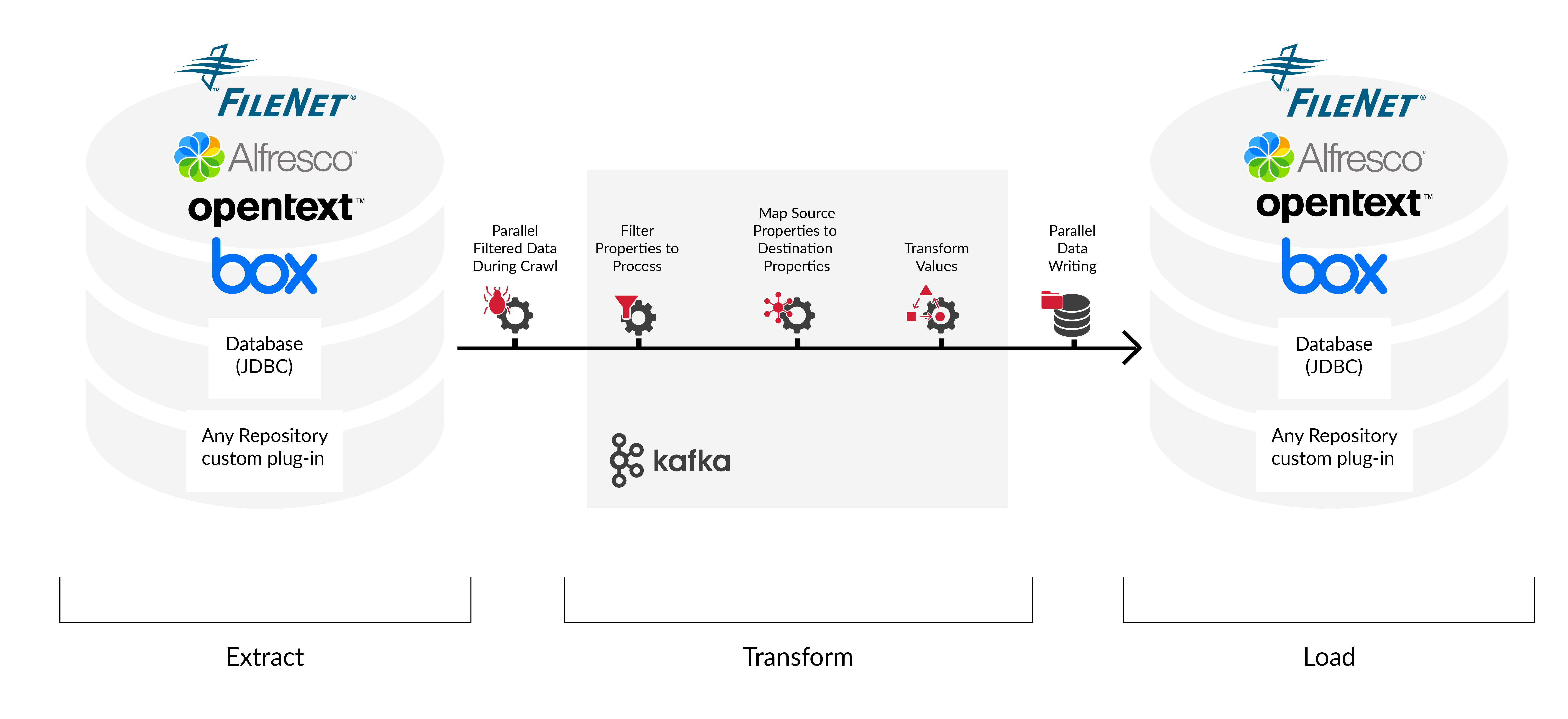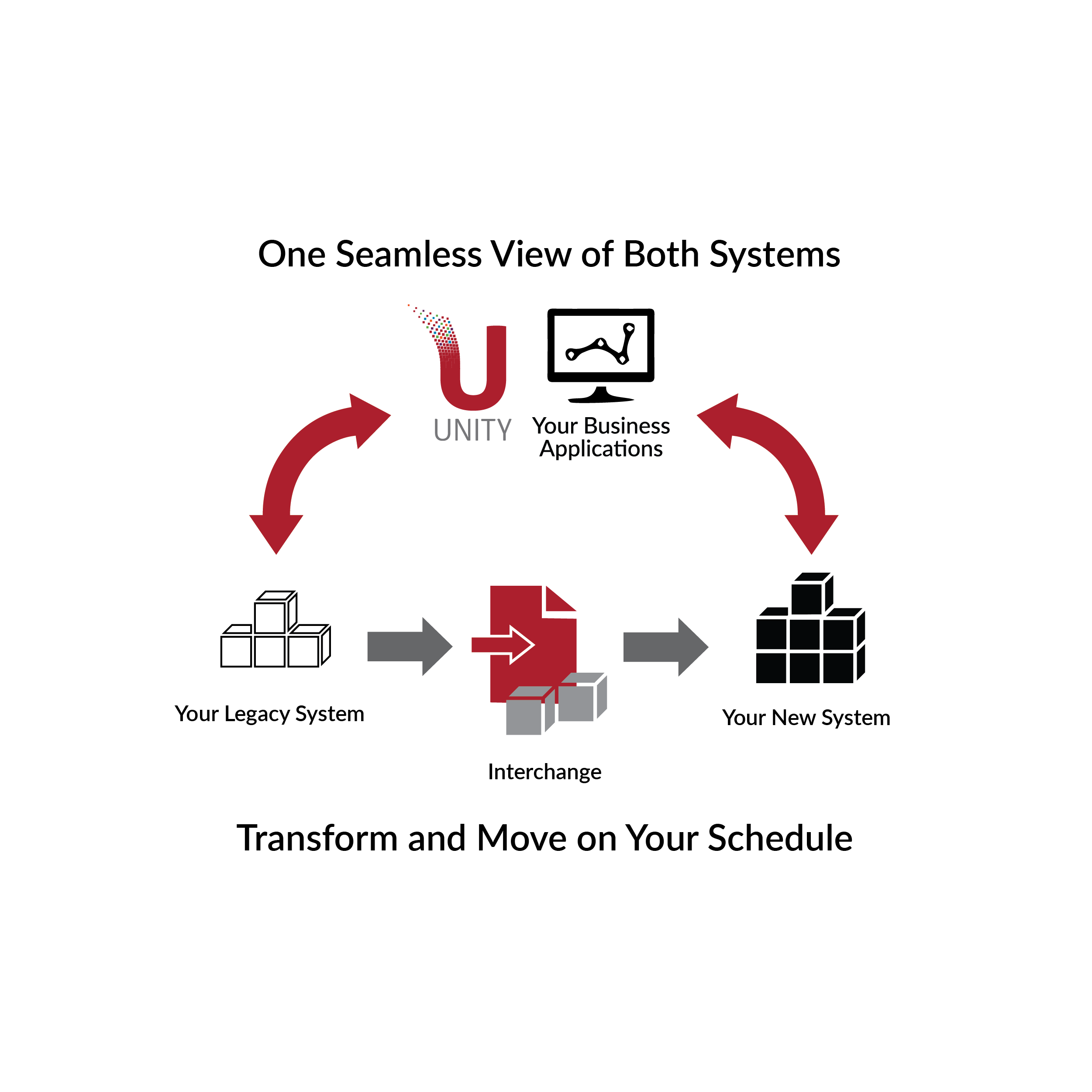How Interchange works
Plan a more thoughtful migration
Migrations mean risk and cost. Vendor tools are oriented towards keeping users on a platform, not helping them off of it. Available tools often don’t fit the use case, don’t support the new target platform or old source platform, or are too expensive. Even minor delays in schedule or slight data issues can have massive business impacts. All-or-nothing migrations over a tight cutover window can cause risk to skyrocket. Custom approaches can have lengthy build and test cycles, and cost can quickly spiral.
Interchange gives you more than a toolset: it gives you time. With Interchange, you have a fast setup, a built-in set of tools and connectors, and the ability to migrate data one document, one department, or one company at a time. With Interchange, you avoid high-risk cutovers, and full custom builds. Combined with Intellective Unity, you can make the entire process transparent for your users.

Import and export without heavy lifting
Reduce impact on your enterprise systems
Migrate high volume, at high speed, with low risk
Don’t just move data: transform it
Handle complex case and workflow migration
Retire your legacy systems – now or in the future

